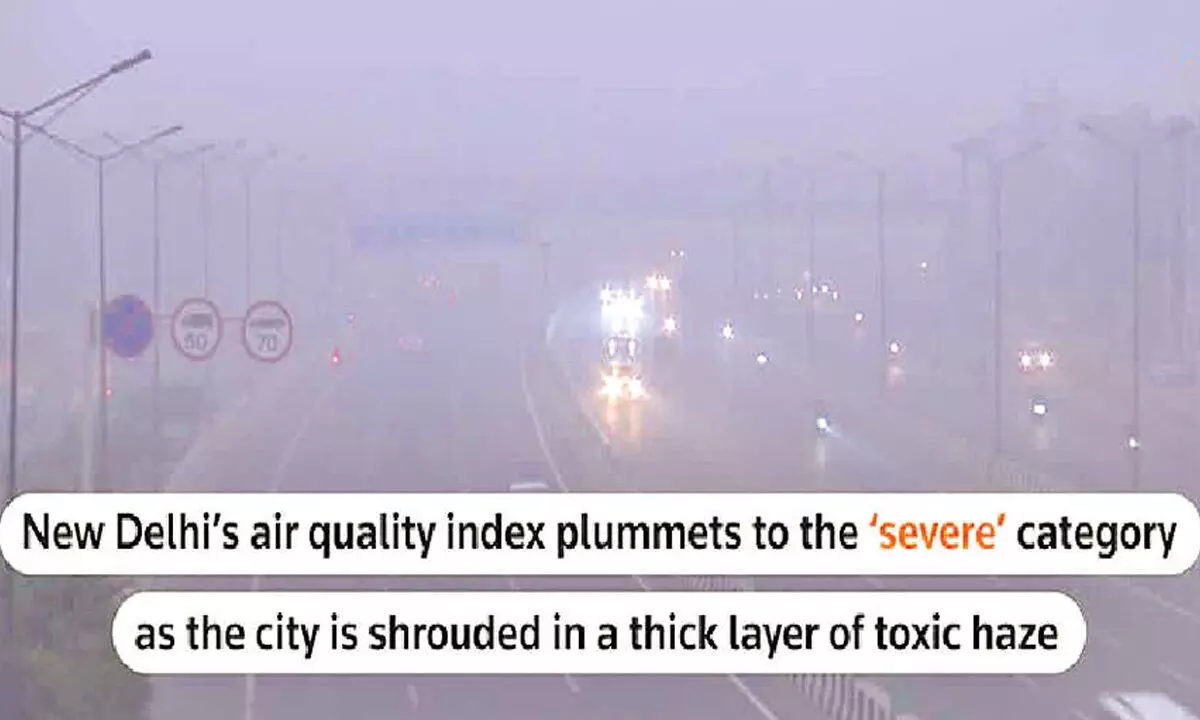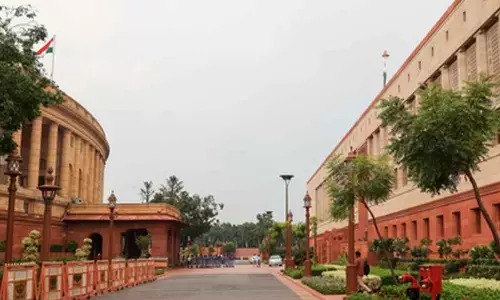Summer cleaner, winter is worse

In 2023, the summer months (from March to June) were significantly less polluted (14-36 per cent) than the corresponding months in 2022. But the winter months of January, November and December were much more polluted in 2023 (12-34 per cent) compared to the months in 2022
New Delhi: New Delhi has again come on top of the real-time list of the world’s most polluted cities compiled by Swiss group IQAir, which put the Indian capital’s air quality index, or AQI, at 640, which is in the “hazardous” category, followed by 335 in the Pakistani city of Lahore.
The year 2023’s winter months were a period when the region of Delhi-NCR slipped back into the abyss of high pollution levels – despite having seen a gradual long-term improvement in annual PM2.5 concentrations since 2015-17. The forward march towards cleaner air and clearer skies came to a grinding halt in 2023, says a new analysis by Centre for Science and Environment (CSE), partly due to meteorological factors.
Delhi has been witnessing a gradual yet consistent decline in its annual PM2.5 levels since 2015-17, with 2020 being the only outlier due to massive disruption caused by pandemic lockdowns. But this downward movement stopped in 2023.
Delhi’s PM2.5 annual average for 2023 (up till December 29, 2023) stood at 100.9 microgramme per cubic metre (µg/m3). This was an increase of 2 per cent compared to the 2022 annual level, and was 6 per cent higher than an exceptionally clean 2020. However, the levels were not as high as they used to be earlier – the average of 2018-22 winters is higher than that of the winter of 2023.
The long-term three-year average trend among the five oldest CAAQMS stations of the city (ITO, IHBAS, Mandir Marg, Punjabi Bagh and RK Puram) also shows a similar pattern. This 2021-23 average has settled almost 3 per cent higher than its 2020-22 counterpart.
In 2023, about 151 days met the National Ambient Air Quality Standard. This was similar to the 2021 trend and second only to 2020 (a lockdown year) when 174 days had met the standards. In 2022, only 117 days met the standard. Almost all of these cleaner days were observed during summer and monsoon seasons.
There was a significant fall in the number of ‘good’ air quality days (when levels are 50 per cent below the standard) in 2023; this stood at 24 days compared to 41 in 2022.
Meanwhile, in 2023, the number of days with PM2.5 concentration in the ‘very poor’ or ‘worse’ categories (as per the air quality index classification) stood at 107 days, including 24 with ‘severe’ levels (until December 30, 2023). In 2022, there were 106 ‘very poor’ or ‘worse’ days, but ‘severe’ days were just nine in number – this was less than half of that of 2023.
In 2023, the summer months (from March to June) were significantly less polluted (14-36 per cent) than the corresponding months in 2022. But the winter months of January, November and December were much more polluted in 2023 (12-34 per cent) compared to the months in 2022. The transition period including February, July, September and October does not show much change, which might be due to the fact that the monsoon months were already very clean.
What went wrong?
Though the number of days with ‘very poor’ and ‘severe’ PM2.5 concentration increased, peak pollution was down: Between October 1 and December 29, there were only three days of ‘satisfactory’ air quality and zero days of ‘good’ air quality. There were more days of these categories in the same period in the previous two years.
The number of ‘severe+’ days was the same as in the winters of 2019, 2020 and 2021, but the peak intensity was lower.
The peak in 2023 was 349 µg/m3and happened on November 13 (the day after Diwali). This is much lower than the peaks recorded in the previous years: in 2022, the peak was 401 µg/m3, while in 2019 it went up to 546 µg/m3.
Highest number of smog episodes observed this season in last six winters: Delhi usually experiences two smog episodes (a smog episode is defined as at least three or more minimum continuous days with air quality inthe ‘severe’ category) in the months of November and December. In 2023, there were three episodes by December 24; on December 30, Delhi was reeling under its third day of continuous ‘severe’air quality, which was turning into the city’s fourth smog episode.
This was the highest number of smog episodes observed in a season in last six winters. Overall, 2023 winter seems to have had the most consistently bad air compared to the last six winters, with minimal fluctuations in daily PM2.5 levels. Data indicates that it was the longest spell of ‘very poor’ or ‘worse’ air in last six years.
Slow surface winds seem to be the main contributory factor to the winter trend: Farm stubble fire smoke is generally perceived to be the main contributor to heightened PM2.5 levels during the first half of the winter season. But in 2023, the number of fires in Punjab and Haryana were nearly identical to 2022’s number of incidences.
Data from both MODIS and VIIRS satellites shows that there was no significant difference between fire instances of 2023 and 2022 ((see corresponding graph in the complete report)). The contribution of fires to PM2.5 in November 2023 only adds up to 1.48 tonne (calculated on the basis of SAFAR’s Decision Support System estimates) – the lowest in the last six years; 2023 winter also recorded the maximum rainfall in the last six years, and the cold conditions were less severe than usual. Says Somvanshi: “All these factors should have led to a cleaner winter. But this was undone by the lack of surface winds.”
In November 2023, the average surface wind speed in Delhi was 9.8 m/s, which was the lowest in the last six years. It was 21 per cent less than the wind speed in November of 2022.
Somvanshi explains: “Low wind speed means that local pollution dispersion is horizontally restricted, while vertical dispersion is already restricted because of the winter inversion phenomenon. This trapping of local pollution from all sides has made this winter exceptionally bad despite lesser smoke from farm stubble fires. This also explains low peaks and relatively uniform bad air quality with minimal fluctuations in PM2.5 concentration throughout the season. It must also be noted that heavy rains in November had insignificant impact on air quality.”
What should be
the way ahead?
Says Roychowdhury: “This winter is a lasting reminder of the fact that Delhi, despite succeeding to bend the long-term pollution curve downward over the last few years, has not achieved deeper cuts in emissions to sustain a more aggressive reduction for meeting air quality standards and prevent winter spikes.” Roychowdhury and Somvanshi point out that this requires sustained action:
• Towards significant reduction in emissions from vehicles, with a massive scaling up of the zero-emission electric vehicle programme and an efficient public transport strategy
• Towards clean fuel transition in all segments of industries,with stringent compliance with emissions targets and replacement of solid fuels in households and eateries
• Towards elimination of waste burning, with a comprehensive waste management system ensuring 100 per cent segregated collection, material recovery and remediation of legacy waste
• Towards stringent measures in the construction sector
(Agencies)














